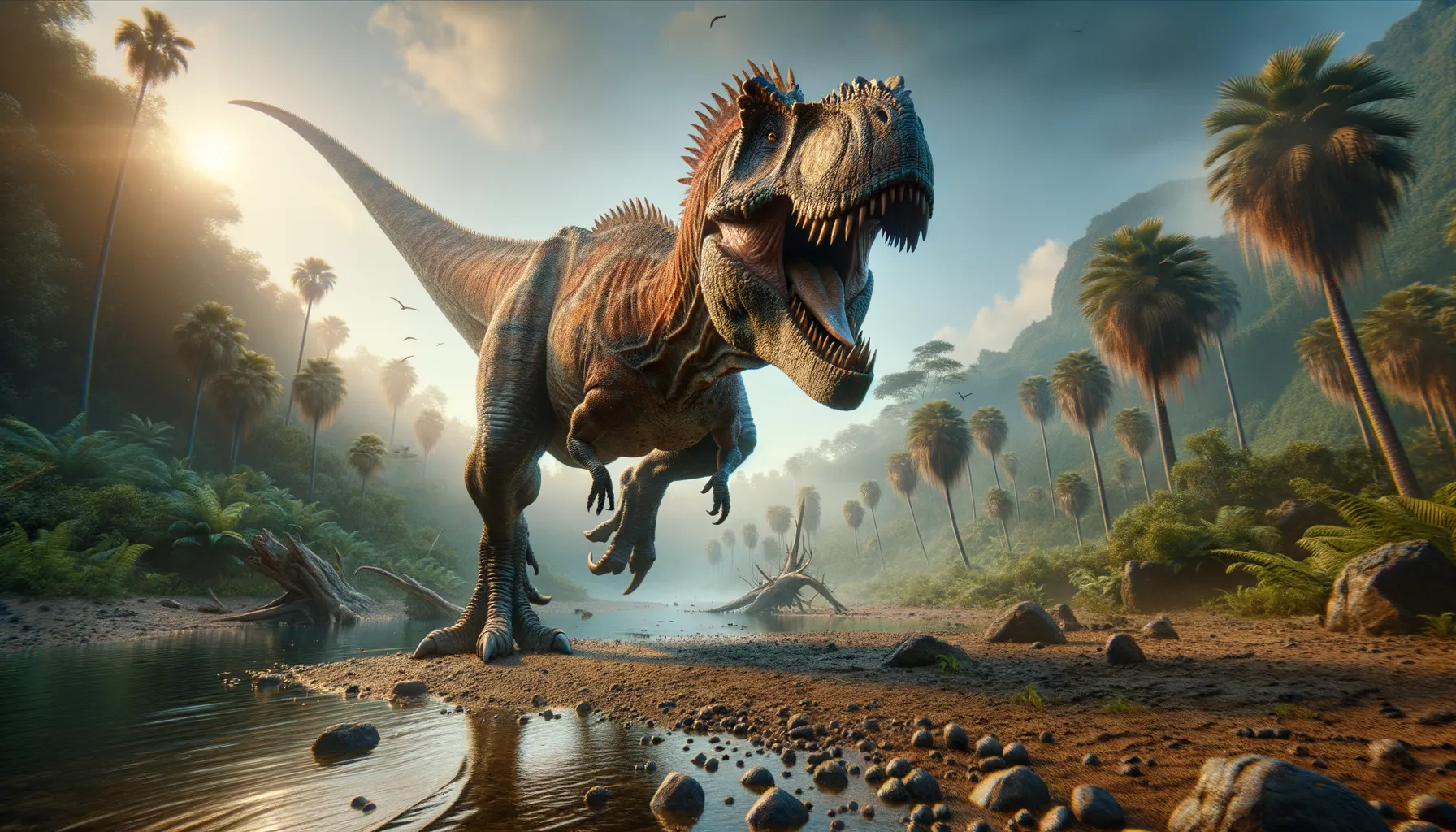
Maleevosaurus
A Cretaceous predator with unique challenges.
Period
triassic
Length
Around 6 meters in length.
Height
About 2 to 3 meters tall at the hips.
Weight
Approximately 1,500 kilograms.
Maleevosaurus was a carnivorous dinosaur that roamed the earth during the Late Cretaceous period. It is noted for its sturdy build and was likely an efficient hunter. This theropod is named after Soviet paleontologist Evgeny Maleev, who played a crucial role in its discovery. Although data on this dinosaur is limited, it provides insights into the diversity and adaptability of theropods in prehistoric ecosystems.
Diet
Maleevosaurus was a carnivore, predominantly feeding on smaller dinosaurs and perhaps scavenging when necessary. Its diet likely included a variety of prey due to its adaptive hunting capabilities.
Hunting
It relied on strategy and ambush tactics to capture its prey, thanks to its moderate speed and agile movements. Its hunting behavior showcases its ability to adapt to different prey and hunting conditions.
Environmental challenges
Living in the Late Cretaceous, Maleevosaurus faced significant environmental challenges such as climate fluctuations and competition for food with other predators. These factors would have demanded flexibility in hunting strategies and adaptability in diet. The changing ecosystems might have also influenced its migration patterns in search of more abundant resources.
Speed
Maleevosaurus likely had moderate speed, sufficient for hunting small prey.
Lifespan
Estimated to have lived 20-30 years.
First discovery
Discovered in the 1950s in Mongolia by Soviet paleontologists.
Fun Facts
- Maleevosaurus was discovered in Mongolia during the 1950s, bringing a spotlight to prehistoric life in Asia.
- Though its exact classification remains debated, it's often considered a possible juvenile form of Tarbosaurus.
- The name Maleevosaurus honors the Russian paleontologist Evgeny Maleev, who initially described the dinosaur.
- Maleevosaurus is estimated to have been around 6 meters long, suggesting it was a fairly sizable predator.
- Experts believe it lived during the Late Cretaceous period, coexisting with many fascinating dinosaurs.
- The specific conditions of its fossil discovery provide important insights into the Asian ecosystems of its time.
Growth and Development
Juvenile Maleevosaurus likely grew rapidly, given the need to quickly reach a size that could ensure survival against predators. Growth rates might have been affected by the availability of food and environmental pressures. The transition from juvenile to adult involved not just physical growth but also the development of hunting skills necessary for thriving in its habitat.
Habitat
Maleevosaurus inhabited a terrestrial environment likely characterized by a mix of forested and open areas, providing diverse opportunities for hunting. The habitat supported numerous herbivorous dinosaurs, which served as potential prey. Seasonal changes could have impacted food availability, requiring movement between regions to find suitable resources. Its environment provided both challenges and opportunities for survival.
Interaction with other species
Maleevosaurus interacted with various other theropod and herbivore species, likely competing with contemporaneous carnivores. Its presence in the ecosystem suggests predator-prey dynamics that helped maintain ecological balance. Interactions with species made the Maleevosaurus a key player in its food chain, either directly or through scavenging behavioral adaptations.
Natural lifespan
Its natural lifespan was typically around 20-30 years in the wild.
Reproduction
Maleevosaurus was oviparous, laying eggs in nests to ensure the continuation of its lineage. These nests would likely have been concealed to protect against predators. Parental care remains speculative but might have involved guarding the eggs until hatching.
Social behaviour
Maleevosaurus might have displayed some degree of social behavior, perhaps hunting in packs or moving in groups to increase survival probability. This social structure would have been advantageous for protection and for more effective hunting strategies. Group behavior could also assist in caring for young or egg guarding.
Fossil locations
Fossils of Maleevosaurus have been predominantly located in Mongolia, providing insight into its geographical distribution. This region was home to various other dinosaur species, indicating a rich biodiversity during the Cretaceous period. The fossils are relatively rare, contributing to ongoing debates about its classification and ecology.
